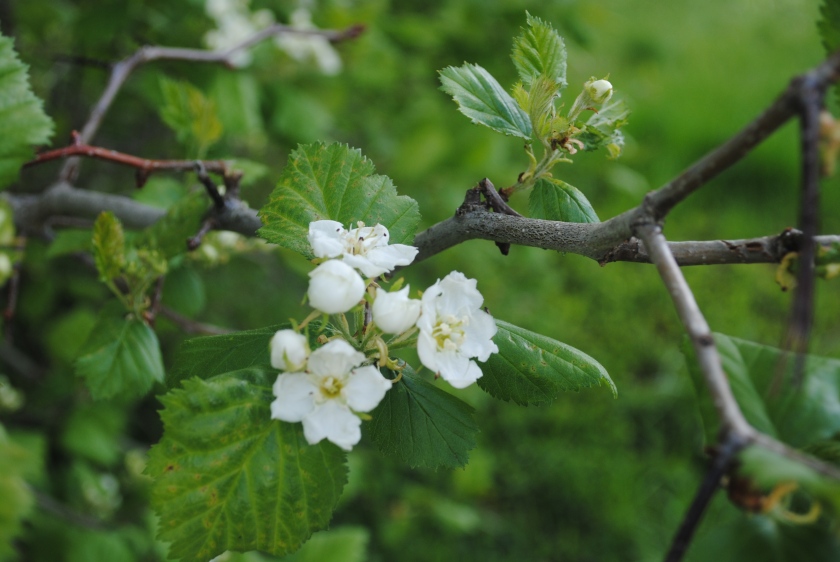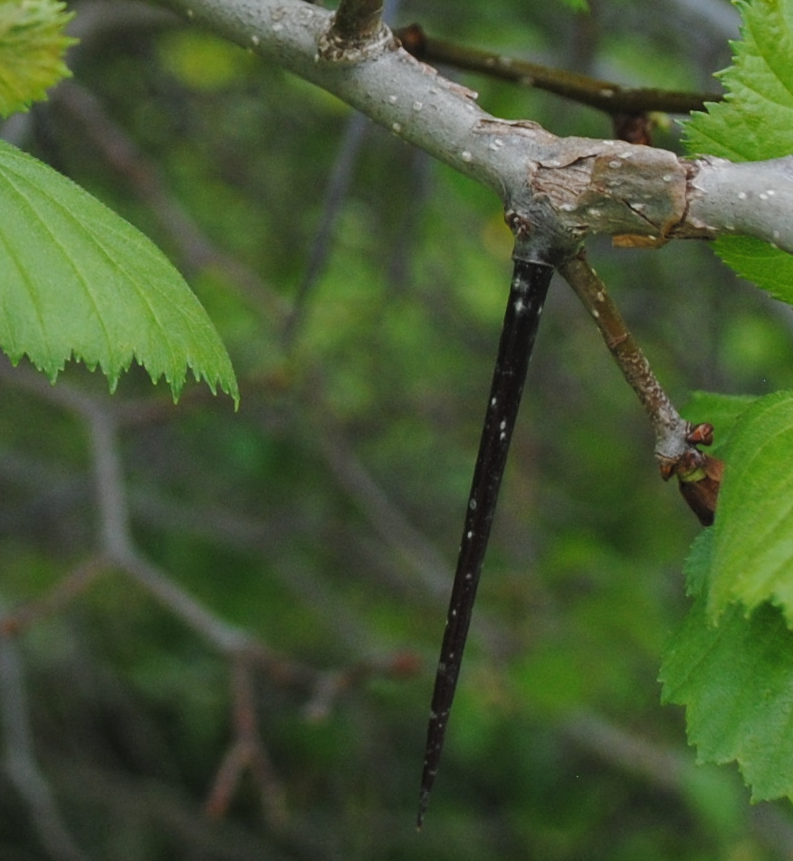Crataegus sp.

Hawthorn. What comes to your mind when you see this word? Some small New England town nestled in the some rural hills, over an hour away from anything. Perhaps the Scarlet Letter, which many of you read in Junior high school. I never read it, but I hear it is about shitty puritanical nonsense that took place a long time ago. And while it’s hard to imagine, it is sadly true that there are millions of Americans who like to see that shitty puritanical nonsense come back, pretty much because they are some sort of dipshit or something. Fuck them. And finally, there are those of you that might envision some kind of tree.
And yeah. There is a kind of tree called a hawthorn. Or more accurately, a whole bunch of closely related trees called hawthorn.[i] The many species of hawthorn trees are native to much of the northern hemisphere.[ii] Though there are several species, they all have many similar features. They have an edible fruit called, well, a haw.[iii] And by now you have probably guessed where the “thorn” part of the name comes in. Yup. Thorns. Not the most creative name, but at least it is accurate. And these aren’t little teeny tiny thorns like in a prickerbush. Nope. These things are like giant nails full of stabby goodness jutting out from all over the plant. Fun! Basically, these things are oversized rosebushes, with matching oversized thorns. In fact, they are closely related to roses.[iv] And like their rosy cousins, they have large pretty flowers to go with the edible fruits and thorns of death.

Fun fact about those thorns: They aren’t particularly effective against herbivores![v] Especially White tailed deer. Well, it kinda slows them down a bit, but not much, they will still eat everything they can reach on that tree.[vi] So right now you are probably asking yourselves why these stupid thorns are there if they can’t keep away the things that would eat them. There is actually a pretty good reason: because there was a time they were necessary, and that time was up until the end of the last ice age which was about 11, 700 years ago.[vii] Because that was around the time that mastodons died out, which were unable to avoid those thorns if they tried to eat hawthorn leaves or fruit.[viii] And it is almost certain they didn’t like getting stabbed while eating. Those thorns are merely an evolutionary reminder of the megafauna that once roamed our region. The hawthorn could survive smaller animals like deer eating some of the leaves, but not bigger animals like mastodons ripping it apart and eating the whole damn thing, so the thorns were a great way of protecting it.[ix] But now they are just kinda annoying.
So next time you run into one of these trees, well don’t run into them because you will get stabbed, unless you are into that sort of thing. I should say come across one of these trees, appreciate the evolutionary wonder of these thorns along with their pretty flowers, and how our landscape was just a few thousand years ago with giant critters all over the place.
Emily Curewitz
[i] Author Unknown “Crategus” Wikipedia 21MAY2017 https://en.wikipedia.org/wiki/Crataegus
[ii] Author Unknown “Crategus” Wikipedia 21MAY2017 https://en.wikipedia.org/wiki/Crataegus
[iii] Author Unknown “Crategus” Wikipedia 21MAY2017 https://en.wikipedia.org/wiki/Crataegus
[iv] Author Unknown “Crategus” Wikipedia 21MAY2017 https://en.wikipedia.org/wiki/Crataegus
[v] Mueller, R.F. “Floral Legacies of the Megafauna” Forests of The Central Appalachians 24May2017 http://www.asecular.com/forests/megafauna.htm Originally published in Earth First! 1990 Volume 10, Number 3, Pg 23
[vi] Mueller, R.F. “Floral Legacies of the Megafauna” Forests of The Central Appalachians 24May2017 http://www.asecular.com/forests/megafauna.htm Originally published in Earth First! 1990 Volume 10, Number 3, Pg 23
[vii] Zimmerman, Kim Ann “Pleistocene Epoch: Facts About the Last Ice Age” LiveScience 09ACT2013 http://www.livescience.com/40311-pleistocene-epoch.html
[viii] [viii] Mueller, R.F. “Floral Legacies of the Megafauna” Forests of The Central Appalachians 24May2017 http://www.asecular.com/forests/megafauna.htm Originally published in Earth First! 1990 Volume 10, Number 3, Pg 23
[ix] [ix] Mueller, R.F. “Floral Legacies of the Megafauna” Forests of The Central Appalachians 24May2017 http://www.asecular.com/forests/megafauna.htm Originally published in Earth First! 1990 Volume 10, Number 3, Pg 23